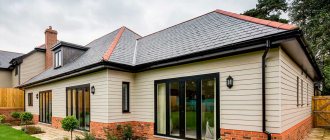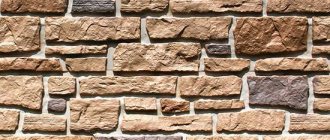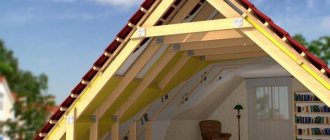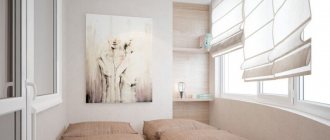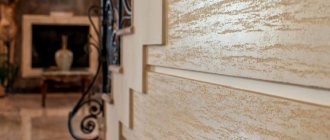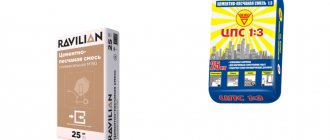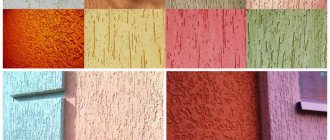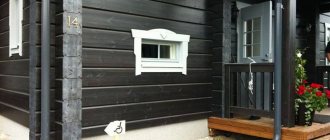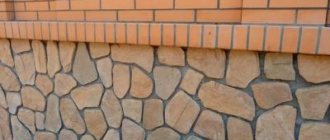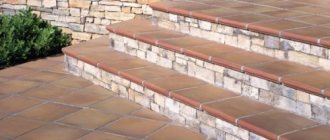You can see even more photos and videos of beautiful houses in the Grand Line gallery.
A house made of brick or aerated concrete may well look like a wooden one and vice versa. It all depends on what materials will be used to decorate the facade of a private house. Modern solutions differ in durability: there are claddings with a service life of 10 to 60 years. The decorative effect will also differ, as will the cost. When choosing, you need to take all these points into account.
Decorative plaster
Plaster mixtures are produced in a wide range, including those with decorative additives. Thanks to different fillers and technologies, you can create different textures, from smooth “Venetian” to the now classic “bark beetle”. The plaster is universal, can be used regardless of the material of the load-bearing walls, is vapor permeable and does not create a “thermos” effect, and provides additional heat and sound insulation properties. Can last 10-30 years. Plaster mixtures can be painted with pigments, which means that the color of your facade can be any color.
The properties of the material differ slightly depending on the composition:
- Mineral plaster is characterized by low elasticity and affordable cost; it usually lasts no more than 15 years;
- acrylic plaster is more elastic and practically does not crack, and its service life is longer;
- silicate plaster sets quickly and is not difficult to maintain;
- Silicone plaster can last more than 30 years; it practically does not absorb dirt.
However, it is worth remembering that plaster is a wet finishing technology. To prepare the solution you will need a lot of water, and its application requires experience, skill and time. If you carry out work without skills, there is a high risk that the plastered layer will crack or will not hold up at all. A cracked facade cannot be repaired with plaster. Work cannot be carried out at sub-zero temperatures.
Sheathing a house using sheathing
In general, there are two options for cladding a house:
- Directly onto the walls, protected from the inside by a layer of vapor barrier. In this case, lathing is not needed. In this way, plastering is often done on brick and reinforced concrete walls.
- On the sheathing. This is a ventilated facade system in which there is a gap between the finishing and the walls, in which, as a rule, the insulation is located.
We advise you to study in more detail: “All types of insulation: classification by properties and composition.”
The lathing is made of a metal profile or wooden blocks with a cross-section of 40x40 mm, a humidity of no more than 15-20% and impregnated with fire and bioprotection. Markings are made on the wall first.
Sheathing made of metal profile
On average, the lathing pitch is 300-400 mm, but it is important to consider the length (for vertical slats) and width (for horizontal slats) of the material used. Also, profiles must be attached around window and door openings.
A heat-insulating material is installed between the bars, which is secured with mushroom anchors. The insulation is covered on top with a superdiffusion membrane, fixed to the staples of a construction stapler. After this, you can begin sheathing.
We advise you to study in more detail : “FAKRO waterproofing membrane: its functions, scope of application, types and installation technology.”
Please note : for greater rigidity of the wooden sheathing, horizontal slats can be additionally attached between the main vertical bars.
Natural and artificial stone
Stone cladding looks status and impressive; such a facade always attracts attention. But natural stone is very heavy, and it is not a fact that the existing foundation of the house will withstand the load. The need to strengthen foundation structures significantly increases the cost of work, and this is almost always unjustified.
But in terms of durability, reliability and decorative qualities, the stone has no equal. Depending on what style you want to follow in the cladding, you can use limestone, sandstone, beige Dagestan stone, slate with a “torn texture,” granite or marble in different colors.
Artificial or decorative stone can look the same as natural stone, but will weigh less. This cladding remains environmentally friendly, resistant to weather conditions, durable and stylish. But it is worth considering that the cost of stone finishing is always high, and natural stone will cost many times more than other options.
Facing brick
A facade made of facing bricks will have the following features:
- weather resistance;
- status appearance in a classic style;
- fire safety;
- resistance to pollution;
- long service life, up to 50-100 years.
The following brick options can be used for cladding facades:
- silicate: is relatively inexpensive, but has a high moisture absorption coefficient, more than 15%, and is not suitable for regions where it is constantly damp;
- ceramic: looks attractive and stylish, but frost resistance is not very high;
- clinker: also made on the basis of ceramics, but better in operation; Available in a wide range of colors and textures, with a smooth and “ragged” surface;
- hyperpressed is characterized by increased strength and frost resistance, but poor pigment stability and high weight, as well as low heat-insulating characteristics.
But you need to understand that this material requires work experience. It also creates additional load on the foundation, which must be taken into account if the house is already old.
New rare materials
For sophisticated owners of buildings and private houses, we can recommend unique materials and technologies for cladding. For example, the German brand “Erfrur” invented and launched façade wallpaper. They are sold in rolls. They come complete with additional elements: profiles, glue, reinforcing mesh, coloring composition. The manufacturer promises that the wallpaper will last 30 years. Since the material is new, this claim has yet to be verified.
Figure 10. The German brand “Erfrur” invented and launched façade wallpaper.
Concrete siding is another rare cladding material. It is made on the basis of sand and cement with the addition of dyes, therefore it is environmentally friendly and safe. You can choose any color for the cladding. The disadvantages of this material include its heavy weight. To use such siding, you need to take care of a reliable foundation and strong walls.
Figure 11. Concrete siding is another rare cladding material.
Clinker thermal panels are the same clinker tiles, only with a layer of polystyrene fused onto it. It looks beautiful, offers all the advantages of clinker tiles and additionally insulates the building. The material has one disadvantage - its high price.
Glass panels are an original option for cladding buildings in a modern style. Suitable mainly for office and administrative buildings, as well as shopping centers, but can also be used for finishing the facades of cottages of progressively-minded owners.
Figure 12. Glass panels are an original option for cladding buildings in a modern style.
As you can see, there are many types of materials for cladding the facade of a wooden house and a brick cottage. You just need to choose what you like and what suits the price.
Block house
The block house is made from natural wood, but it is an imitation of logs. It is a lining with a convex front side. Such wooden facades are fixed to the frame and look original and impressive. Among the advantages of a block house are its high soundproofing characteristics, as well as the absence of additional load on the foundation. This material is produced in two classes, A and B. Class A will be more expensive, since the wood in it is of higher quality, without visual defects.
However, it must be taken into account that the tree needs additional protection and preventive work. So, you will need impregnation with fire retardants - agents against insect pests. Impregnations and external coatings will have to be renewed at least once every three years, or even more often.
Painting
Finishing the facade of a house with paint is the simplest and cheapest option. It is enough to buy paint and varnish material, prepare the surface and carry out the work. It is often used for a wooden house, as it allows not to hide its noble appearance, but, thanks to impregnations and varnish, to emphasize its beauty and texture.
Paint can also be applied to other surfaces: metal, concrete, plaster, brick, panels, natural stone. It will help transform the facade into any color, and also forms a protective layer that protects the facade from external factors. Each surface requires its own paint and varnish material. The table contains detailed instructions:
Note! Abbreviations indicate the following types of paints: PVC - polyvinyl chloride, AKR - acrylic-based, SLN - silicone-based, A-SLN - acrylic-silicone, IZV - limestone, SLK - silicate, P-SLK - polysilicate, CM - cement-based.
Before painting, the wall is well prepared, defects are eliminated, and primer is applied.
Porcelain tiles
Porcelain tiles for facades are used in the form of tiles, which are mounted on the sheathing. You can choose a material with a matte, textured or polished surface, depending on the effect you want to achieve. Porcelain tiles increase the load on the foundation, and fixing it is quite difficult. In cost it is comparable to natural stone.
The main advantages of such cladding are durability, strength, absolute moisture resistance, and resistance to extreme sub-zero temperatures. Porcelain stoneware can imitate marble or other stone, but it can also remain a “fantasy” unique material.
Unusual solutions for finishing the facade of a house
Decorating with polyurethane elements allows you to originally decorate the facade in various styles. Due to their unique qualities, polyurethane products are most often used in urban construction. In private country houses, such finishing is much less common.
Light weight, resistance to temperature fluctuations, high wear resistance and moisture resistance of the material, long service life, ease of installation - this is an incomplete list of the advantages of polyurethane decor.
The variety of shapes and sizes of polyurethane elements allows you to create unusual exterior decor and transform your home beyond recognition.
Clinker tiles
Clinker tiles are suitable not only for facades, but also for basements and porches. It is available in a variety of formats, including brick-like or in the form of elongated modules. The weight here is lighter than traditional clinker: the load on the foundation when using tiles will be lower. Reliably protects facades, withstands temperature changes, and is frost-resistant. It is about 30% cheaper than brick, but still cannot be called budget. The clinker tiles are fixed with glue. Without experience, such material cannot be installed.
Planed board/lining
Main advantage: environmental friendliness.
Main disadvantages: fire hazard, needs to be treated every year.
This is a time-tested option. Most likely, this is exactly how the village house you inherited from your grandmother is sheathed.
The boards are mounted on a special sheathing. They are nailed according to the scale principle - when the edge of the top board overlaps the bottom one - or in an even layer, avoiding cracks. When properly processed, such cladding is not inferior to the most modern finishing materials.
However, wood has two significant drawbacks: it requires constant care and burns well. However, wood remains one of the most popular finishing materials. And if desired, it can be used not only for cladding as a whole, but also for the design of individual decorative elements.
Important:
carry out hydrophobic treatment and protect the tree from insects.
Siding
This category includes modern materials for finishing the facades of private houses on different bases. Siding is an inexpensive finishing option. It is easy to install and allows you to completely transform the facade, as it is sold in a wide variety of design options. Any surface, including brick and wood, can be used as a base for attaching siding. The service life of the material is about 50 years.
Specific technical characteristics will depend on what kind of siding we are talking about. So, it can be made on the basis of PVC, cement or metal. Let's look at all these varieties in more detail.
Vinyl siding
Vinyl siding is made from polyvinyl chloride, PVC, and retains flexibility and ease of installation. The design of such material can be created to resemble brick, stone, or wood. Texture solutions, plain or with an interesting combination of colors, are also popular.
The advantages of vinyl siding are:
- long service life, about 30-50 years;
- immunity to corrosion;
- fire safety;
- resistance to temperature changes;
- color stability (resistance to ultraviolet rays);
- ease of installation;
- ease of operation (if necessary, the facade can be washed with ordinary water under pressure);
- resistance to wind loads and mechanical damage, but a strong directed impact can still damage the integrity of the panel.
Vinyl siding is available in different colors and textures. Natural and pastel shades are especially popular here. The material is unattractive to insects and does not require constant preventive painting or other types of protection. And in terms of surface texture, it can completely imitate wood, and it looks very realistic. Depending on the visual effect you want to achieve, this cladding can be mounted either horizontally or vertically. The combination of colors within one facade will look very unusual (for example, you can highlight the columns on the sides).
Metal siding
The raw materials for this cladding are aluminum or steel. Metal sheets are primed, then coated with a layer of polymer, thereby creating a protective painted coating. Steel sheets are most often used, since they are cheaper than aluminum and have the following features:
- long service life, up to 50-60 years;
- frost resistance and immunity to temperature changes;
- They can be used equally successfully both in severe frost and in the summer heat - they do not lead or warp.
- do not support combustion;
- immune to precipitation;
- have high mechanical strength;
- have high aesthetics and can imitate natural materials;
- Easily attached to a prepared frame.
The polymer coating makes these materials resistant to corrosion. But you need to make sure that it is not damaged during installation. Metal siding comes in a variety of colors, but some are prone to fading and yellowing.
Fiber cement siding
This type of siding is also called “cement siding.” It is obtained from fibrous cellulose and cement. The raw materials are mixed and pressed, resulting in a material that is not inferior in performance properties to stone. It is characterized by:
- high strength;
- immunity to high and low temperatures;
- frost resistance within 100-150 cycles of freezing and thawing;
- resistance to precipitation, moisture, sunlight;
- long service life of 40-50 years;
- non-flammability;
- fire resistance.
However, you need to remember that cement panels are heavy. They are quite expensive and come in a limited number of colors. But fiber cement siding can quite reliably imitate various natural materials.
Modern trends used in facade design
A large number of styles are used for the interior and exterior decoration of a house; it has also been popular in recent years to combine several different directions on one façade, creating a single picture. The main current trends in the design of the facade of a house:
- simple shapes and clear lines;
- panoramic windows filling the interior space with light;
- minimal amount of decor.
Increasingly, modern architects are trying to reduce the number of decorative elements of the facade, filling each detail with a certain functionality and practicality. That is why on the outer surface you can see various lighting fixtures that highlight a certain part of the building.
Another rule that is strived for when finishing the facade of a building is the use of natural materials or analogues that imitate natural textures. It is also popular to create combined facades, which add originality to the appearance of the building.
Important! Whatever style is chosen for finishing the facade, the main thing is that it matches the surrounding environment and the mood of the owners. It is important to think over the external design even before creating the project, because some options for facade materials are distinguished by greater weight, for which the foundation must be designed.
Natural materials or analogues that imitate natural textures are often used to decorate facades.
The most popular option for façade decoration is the minimalist style, which prefers the use of clear lines and laconic forms. There is no desire to create luxury or pretentiousness here. The application of abundant decor on the facade and the use of too bright shades are excluded. Other characteristic features are the simplicity of the façade and the absence of complex finishing. Minimalism involves a large number of windows, creating a monochrome exterior using light colors. The external walls are richly decorated with LED lighting, which emphasizes the most significant elements of the facade.
The high-tech style is somewhat close to minimalism; it also involves clear lines and regular geometric shapes. You can often see the use of white or gray metal siding, but plastered facades in the same color are also popular. When creating a high-tech design, it is important to equip the house with functional engineering items, which will also play the role of decor. These can be large windows of regular geometric shape, even better round ones, which can be completely moved to the sides using a remote control, or unusual doors.
If we talk about the modern loft style, it involves placing massive ventilation systems, pipelines, wiring and other utilities on the façade.
What facades look like in a classic design
Classic facades will always be relevant, especially for people who are conservative and like to adhere to traditions. Classic trends involve finishing the façade with wood or stone, as well as combining these materials. In this case, it is appropriate to use luxurious decorative elements:
- columns;
Classic-style facades are often decorated with a variety of decorative elements
- stucco;
- massive windows;
- shutters
Due to the fact that the style involves the application of high-quality and natural materials, the design of the facade will not be cheap, but the classics are unlikely to ever go out of fashion and will impress guests of the house for a long time.
The country style in the design of buildings was borrowed from films about American ranches. In this case, the facades are predominantly faced with clapboard, wooden siding or other wood-like material. Sometimes the facade, in addition to lanterns, is decorated with other decorative elements.
Often, when designing facades, Mediterranean motifs are used, which involve the use of warm colors on the facade. In addition to the main windows, it is acceptable to make a number of small windows on the facade, giving the building an infinity effect. Such houses often have semicircular balconies, niches and other elements. In this case, the external walls are mainly finished with various plaster mixtures.
Classic facades require finishing with wood or stone
Facade panels
Facade panels are most often produced to look like stone or brick, which makes this finish popular and aesthetically attractive. This cladding is resistant to temperature changes, sunlight and corrosion. The finished panels can be fixed horizontally or vertically, depending on the effect you want to achieve. Installation work can be carried out regardless of the season, including at sub-zero temperatures.
Facade panels are made of metal, wood-polymer composite, ceramics and other materials. Depending on this, technical characteristics, service life and cost will vary.
Sandwich panels
These are multilayer structures. Metal sheets with various coatings are used here as outer layers, and there will always be insulation inside. The rigid outer cladding makes the material durable and allows it to be securely fixed to the frame. Thanks to the insulation layer, the performance characteristics of the house are improved, and no additional work is required for this.
Sandwich panels can be produced with a smooth, embossed or decorative surface - including stone, wood cladding or brick cladding. Among the advantages it is worth noting light weight, durability, moisture resistance and fire safety. Installation work can be completed quite quickly, regardless of the season. The facade remains repairable. But such material will cost more due to the use of insulation.
Sandwich panels are lightweight materials for finishing the facades of private houses. They practically do not increase the load on the foundation. Therefore, they are suitable for insulation and restoration of old houses.
Product selection criteria
Exterior decoration of facades should not only be beautiful, but also perform the main function of eliminating the negative influence of the external environment. This includes the following points:
- precipitation and high humidity;
- sudden drops and increases in temperatures;
- influence of sunlight (ultraviolet);
- frost;
- wind load;
- shocks and damage;
- microorganisms, rodents and insects.
Therefore, the requirements for materials for finishing walls outside must be appropriate. The main ones are: reliability, high decorative characteristics, affordable cost. List of other important characteristics:
- Protection from precipitation.
- Protection against sudden drops and increases in temperature.
- Fire resistance.
- Tensile strength.
- Durable, shockproof.
- Simplicity of installation work for cladding the facades of houses.
- Resistant to fading.
Product selection criteria There are some other tips that will help determine the best option:
- thermal insulation performance;
- ability to block street sounds;
- environmental cleanliness;
- certificate of conformity;
- uniform color of all elements.
It is necessary to take into account the level of complexity of installation. Some materials used for exterior finishing of the house can be installed independently, but there are also those whose installation is best left to professionals.
Metal cassettes
These are special facade cassettes that are made of metal. They look modern and discreet. Previously, they were used for public buildings, but today they are actively used in private housing construction. They are squares or rectangles made of metal with a colored polymer coating. Aluminum or steel is used as a base. Metal cassettes can be used for new buildings or restoration of old buildings. They are attached to the frame to any base and completely hide its unevenness or defects. They remain reliable, durable and aesthetically pleasing, do not burn, and are resistant to various weather conditions. They are available in different colors and sizes, but remain an expensive solution. If the polymer coating is damaged, metal corrosion may occur.
Imitation of timber
This is a natural material - natural wood, which is actively used in decoration as an alternative to lining or block house. The material looks harmonious on the facade of dachas, bathhouses, and country cottages. The naturalness of the material allows it to fit into the landscape without any difficulties, emphasizing its environmental friendliness.
Wooden panels “under the beam” are made from linden, birch, pine or larch, and the last two options are most often used. They can be produced up to 35 mm thick, up to 24 cm wide and up to 6 meters long. There are 4 classes of imitation timber available, from material with possible defects of class C and with minor flaws of class B to first-class class A and extra class, which is designated E.
Imitation timber has excellent decorative characteristics, especially since the color of the wood can be changed using impregnations, varnishes and oils. These panels are lightweight, do not create additional load on the foundation, retain heat well and provide additional sound insulation.
But the total service life of imitation timber is unlikely to exceed 15 years. In addition, every 2-3 years the casing will need to be varnished to protect it from drying out and insects. In addition, the material remains a fire hazard, and can rot due to high humidity.
Wood cladding
Wooden cladding is classified as siding, which is not entirely correct - siding is an imitation of wood, not a natural finish. The most common are several types of wood cladding.
- Board - both planed and unplaned boards are used, the orientation is predominantly horizontal butt-joint or overlapped (American), but vertical cladding based on Scandinavian motifs is also found.
- Planken - usually made of larch, a perfectly smooth board with hewn edges and edges, is rarely used as the main material due to its high cost, and is mainly combined with other types of facade finishing.
- Lining is the most common interior wooden finish, but it is also widely used on the facade, the difference is in the type of wood (coniferous is desirable for the street) and thickness (15-25 mm). The lining is a dry, profiled board planed on all sides with a tongue-and-groove system, just like siding.
- Imitation of timber - most often made from coniferous wood, like lining, this type of board has a tongue-and-groove system, plus side chamfers cut at an angle of 40˚. It is used for both interior and exterior decoration, the only difference being the thickness of the planks (20-40 mm). After installation, the facade is indistinguishable from the facade of a house assembled from real profiled timber.
- Block house is also an imitation, mainly external, but not of timber, but of logs, the difference from lining and imitation timber is only in the semi-cylindrical profile shape. From afar, the façade of a block house is indistinguishable from a log house; up close, the ideal geometry and uniform size will be noticeable, which is uncharacteristic even for a rounded log, not to mention a hand-cut one.
- Shingles - unlike the bulk of wood trim, this is small-piece cladding in the form of plates, 5-10 mm thick, up to 400 mm long and 150-20 mm wide. The name of the material is due to the manufacturing method - they “tear” the chock, breaking off dies from it.
Regardless of the type, wooden cladding is attached to the sheathing and hardware (nails, clamps, etc.). The most popular is wood cladding of frames and wooden houses after insulation, but the base can be almost anything. The advantages of natural cladding include:
- Environmentally friendly.
- Decorative.
- Easy to install.
- Resistant to temperature changes and mechanical stress.
The main disadvantages are the relatively short service life, high cost and the need for additional protective and decorative treatment. And such treatment must be repeated every few years, the specific interval depends on the type and quality of the chosen product. Covering paints stay on the facade longer than glazing compounds and impregnations, but not everyone wants to hide the original texture.
Zack75FORUMHOUSE Member
Chopped larch shingles of decent quality and geometry, the dies were attached to the sheathing with special nails with a D-shaped head and a nailer. This is what ended up happening. Bast hut!
I think the idea with rounded corners is especially cool. By the way, it’s easier to match the walls this way. Somehow I didn’t quite understand how to make the outer corners of the shingles, otherwise it would have been difficult and less interesting, IMHO.
Thermal panels
Thermal panels are a multilayer material with a ready-made fastening system. It contains three layers: foil, insulation and decorative. Polystyrene foam in regular or extruded version, or polyurethane foam is used as insulation here. With a low weight of insulation, such materials have sufficient heat-insulating properties. The decorative layer here will most often be an imitation of brickwork made from clinker tiles. But artificial stone, materials based on marble chips, and modern polymer materials can also be used for outdoor decoration. The weight of one panel does not exceed 5-7 kg. This material costs more than siding and metal sheathing.
The material is very warm, vapor-tight, and can only be attached to a pre-leveled base. This is an environmentally friendly solution suitable for use in regions with sub-zero temperatures. Thus, they can be used even in northern regions, since the recommended operating temperature range is up to -80 degrees. The service life of thermal panels is from 30 years.
Corrugated sheeting for walls
These are special sheets for external cladding, which are made of steel by profiling. They have a characteristic pattern, where each “bend” forms an additional stiffening rib. For facades, a special wall profiled sheet is used, which is designated C in the markings. Steel profiled sheets are reliably protected from corrosion. For this purpose double protection is used. So, first, a zinc anti-corrosion coating is applied to the metal, which prevents contact of the steel with the environment. Then a layer of polymer is applied on top of the zinc. It also protects against corrosion, ultraviolet exposure, and also provides decorative properties to the material. The polymer layer can be colored in almost any shade (most often painted in RAL colors).
Corrugated sheeting is characterized by: strength, wind resistance, resistance to external influences, and reliable anti-corrosion protection. Since this material is attached to the facade over the frame, it remains possible to use additional insulation or create a ventilated system. Facades with corrugated sheets can be insulated with polystyrene or mineral wool. The material is also actively used for roofing and cladding of outbuildings and garages. Therefore, with its help you can create balanced architectural compositions on the site.
Combined options
Combination is used to enhance the aesthetic effect of the cladding. Moreover, in this category there are established traditional finishing methods, but there is also room for experimentation.
For example, among the combined options, half-timbered houses are very popular. This is a German or Austrian style, when plastered walls are complemented by unlined wooden beams that create stiffening ribs. It looks lively and interesting, gives an excellent aesthetic effect.
The combination of a wooden facade and a stone plinth will look no less beautiful. Such a house immediately creates a feeling of reliability. At the same time, you still have the opportunity to experiment with color. So, if you make the house darker at the foundation and lighter in the roof area, you can make the building visually taller. You can also combine the same materials in different colors. For example, plaster can be painted with pigment. It will also look quite nice if you take 2-3 matching colors of siding or corrugated sheets.
conclusions
You can buy any finish, but when choosing, it is important to consider the style in which the house is decorated. Thus, the “folk” rustic style is perfectly conveyed through the use of stone and plaster. Brick and wood can be used for a rustic style cottage. A classic building will look good with stone or porcelain stoneware. And minimalist modern buildings can be faced with metal or panels, plain or concrete-like.
You can see even more photos and videos of beautiful houses in the Grand Line gallery.
